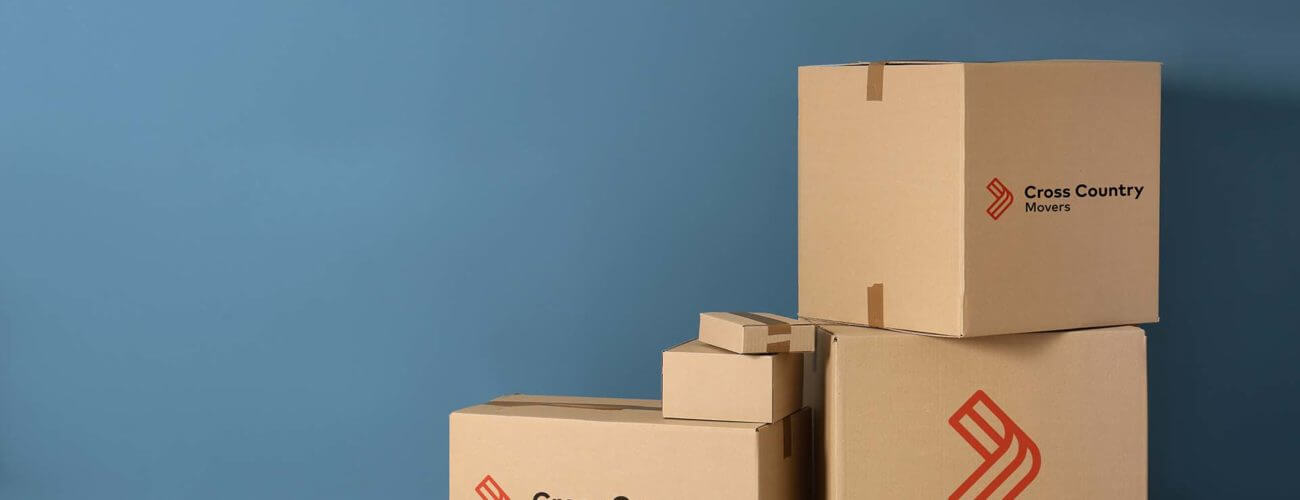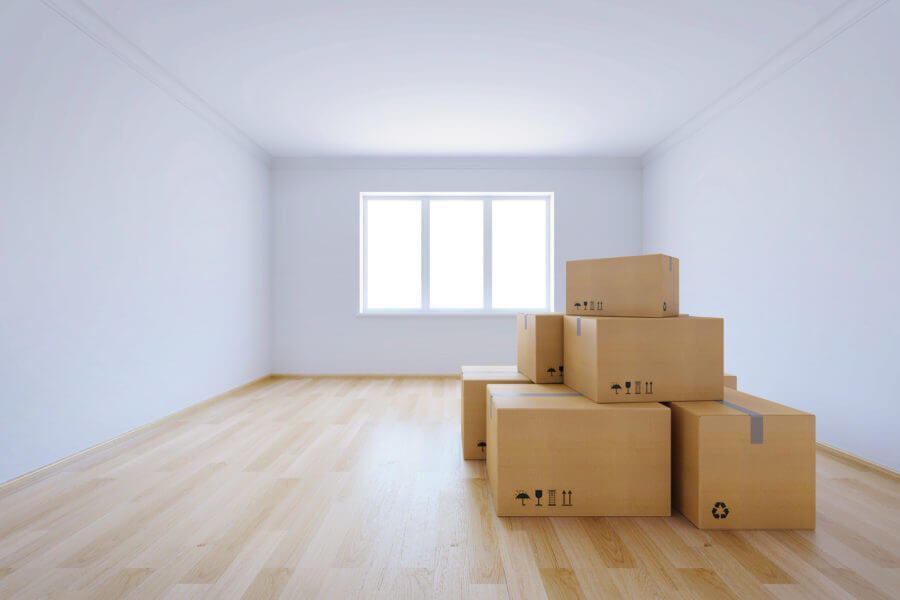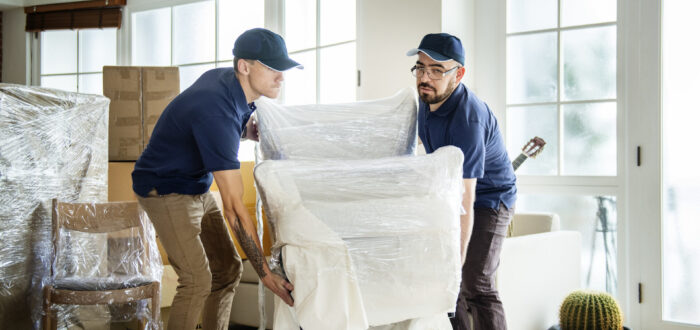

How to Pick the Best Size Boxes for Moving Across the Country
Posted in How-to,Moving Tips & Tricks on April 13, 2023
When moving cross-country, one of the most important decisions you’ll make is choosing the best size boxes for moving. Whether you’re a seasoned mover or embarking on your first big move, selecting the appropriate boxes can seem overwhelming. With the right guidance, you’ll become a pro at picking the perfect packing materials.
This ultimate moving guide will help you break down relocation essentials and their priority. You’ll learn everything from box materials and types to how to efficiently pack them, ensuring your belongings arrive safely and securely. Tackle the exciting relocation adventure with confidence and ease.
Before Choosing Best Size Boxes for Moving, Assess Your Belongings
As you prepare for relocation, it’s essential to first assess your belongings and select the best-sized boxes for relocation. Long-distance movers often recommend creating a household inventory list to help you keep track of everything you own and its approximate value.
This list will not only help you in the process but will also be helpful for insurance purposes in case of any loss or damage. While at it, consider your unique circumstances, such as relocating with pets, and note any special requirements or accommodations for their safe and comfortable transport.
Take Inventory to Determine the Size and Weight of Boxes You’ll Need
To make the most of your relocation experience, organize packing by taking inventory of your belongings and determining the size and weight of the necessary boxes. Consider the dimensions of your furniture, appliances, and other large items, including smaller items that can be packed together.
This process will help you determine the variety of box sizes and different packing materials you’ll require, such as bubble wrap, packing paper, and peanuts, to adequately protect your belongings during shipping.
Sort Items by Fragility and Determining Which Ones Need Special Care
Another important step in the packaging process is sorting your items by fragility and determining which ones need special care. This will help you decide on the appropriate packaging materials and techniques to keep them safe.
For instance, you may need to research how to pack fragile items like glassware, delicate electronics, or artwork, as they often require extra attention and cushioning. Additionally, using relocation labels on boxes containing fragile items will alert everyone to handle them with care and ensure they’re placed strategically within the truck to minimize the risk of damage.
Why You Need Small Boxes, AKA the Best Sized Boxes for Moving
Small boxes may not seem like the most exciting topic, but they’re crucial for a successful relocation. Often referred to as the best for relocation, small boxes are ideal for various uses.
They are perfect for packaging heavy items like books, as their compact size limits the overall weight of each box, making them easier to carry. Small boxes are also great for fragile items, such as dishes and glassware, as they provide better protection and stability.
When learning how to pack dishes, you’ll find that smaller boxes with dividers or cushioning materials can minimize the risk of breakage during shipping. Recommended sizes typically range from 1.5 to 2.0 cubic feet, making them a versatile option to prepare for a move.
Advantages and Disadvantages of Small Boxes
As with anything, there are advantages and disadvantages to using small boxes during relocation.
The key advantages include:
- Small boxes make it easier to pack clothes and other items in an organized manner, ensuring that your belongings are easy to find when you reach your new home,
- They are also easy to stack and maneuver, helping you optimize space within the truck,
- Small boxes are easier to lift and carry, reducing the risk of injury and strain for you and the crew.
On the other hand, the potential disadvantages are:
- Small boxes can be less efficient for packing large quantities of smaller items,
- You might need to use more boxes to accommodate your entire home inventory,
- Increased packaging time and a higher number of boxes to transport.
With careful planning and organization, the advantages of using small boxes generally outweigh the disadvantages, making them an essential tool for a successful relocation.

Why You Need the Medium Size of Boxes for Moving
Medium-sized boxes are another essential component of a successful move, as they offer a versatile and efficient solution for packaging various belongings. Common uses for medium boxes include kitchen items, such as pots, pans, small appliances, toys, and other moderately sized household items.
When you pack books, medium boxes can be useful for lighter volumes while keeping the overall weight manageable. Similarly, medium boxes are great for packaging toys, as they can accommodate a mix of different sizes and shapes without becoming too heavy.
Recommended sizes for medium boxes typically range from 3.0 to 4.0 cubic feet, making them a popular choice for many relocation-based tasks.
Advantages and Disadvantages of Medium Boxes
Medium boxes offer several advantages when preparing for a move. They include:
- They balance between size and weight, ensuring you can pack many items without creating overly heavy boxes. This can be especially useful when considering how to move a mattress or bed, as medium boxes can be used for bedding and pillows,
- Medium boxes are versatile and can be used for a wide range of belongings, making them an indispensable resource for any move.
However, there are also some disadvantages to using medium boxes, like:
- They may not provide the same level of protection for fragile items as smaller boxes, which can offer more stability and cushioning,
- While medium boxes can accommodate many items, they might not be suitable for very large or oddly shaped belongings, requiring you to use alternative packaging solutions.
Nonetheless, when used appropriately and combined with other box sizes, medium boxes can greatly contribute to a smooth and efficient relocation.
Why Do You Need Large Boxes?
Large boxes play a vital role in relocation, providing ample space for numerous items and making packaging more efficient. Common uses for large boxes include clothing, bedding, linens, and other lightweight, bulky items.
They can also be used for large toys, sports equipment, and even small furniture. Large boxes are particularly useful when you move out for the first time, as they can accommodate a significant portion of your belongings while still being manageable to transport.
Recommended sizes for large boxes typically range from 4.5 to 6.0 cubic feet, offering a versatile packing solution for various household items.
Advantages and Disadvantages of Large Boxes
Large boxes have several advantages that can make your move easier, especially when relocating with kids or shipping a substantial amount of belongings. They are:
- Their generous size allows you to pack a significant number of items, which can save time and effort during the packing process.
- Large boxes are also ideal for keeping items together, such as clothing and bedding, making it easier to unpack and organize your new home.
However, there are also some disadvantages associated with using large boxes, such as:
- They can become too heavy when filled with dense or heavy items, increasing the risk of injury while moving. Be mindful of each box’s weight, keeping them manageable for lifting and carrying,
- Large boxes may not provide the same stability and protection for smaller or fragile items as their smaller counterparts. Use appropriate materials and techniques to keep your stuff safe in shipping.
By using large boxes appropriately and combined with other box sizes, you can create an efficient packing strategy that will contribute to a successful and stress-free move.

Why Specialty Boxes Are Integral for Long-Distance Moving
When using cross-country moving services or attempting to relocate to a new city alone, you must ensure your belongings are well-protected during shipping. This is where specialty boxes come into play.
They’re specifically designed for certain items, providing an extra layer of protection and making the packaging process more efficient. An overview of specialty boxes includes wardrobe boxes, dish barrels, and other unique containers designed for specific purposes:
- Wardrobe boxes, for instance, are tall and come with a metal hanging bar, allowing you to transfer your hanging clothes directly from your closet to the box. Assembling wardrobe boxes isn’t complicated, so you don’t have to be afraid of using them,
- Dish barrels are heavy-duty boxes designed to safely transport fragile kitchen items, such as plates, glasses, and bowls. These boxes often feature built-in dividers and provide extra padding to minimize the risk of breakage,
- Mattress boxes are designed to protect your mattress from dirt and damage, while the mirror and picture boxes provide a secure way to transport delicate artwork and mirrors.
- TV boxes are specifically crafted to protect flat-screen TVs, ensuring they remain safe from potential damage during the move.
Recommended sizes for specialty boxes will vary depending on the specific type and purpose. For instance, wardrobe boxes are typically available in two sizes: short (24″ x 20″ x 34″) and tall (24″ x 20″ x 46″), while dish barrels may come in dimensions such as 18″ x 18″ x 28″.
When selecting specialty boxes, choose the size that best accommodates your items while providing the necessary protection. You can check the tips from the woman in the video below, where she explains where you can get free containers for your relocation; this way, you can save money on regular boxes and invest in specialty ones.
What Factors Should You Consider When Choosing Box Sizes?
Selecting the right box sizes is crucial for a successful and efficient experience. As you work through your first apartment checklist or plan how to unpack at your new home, consider the following factors when choosing box sizes for your move.
Size and Weight of Items Being Packed
The size and weight of the items you’re packaging play a significant role in determining the appropriate box size.
Consider the dimensions and weight of your belongings to select boxes that can accommodate them without becoming too heavy or unstable. For example, when you pack a TV, you’ll want a box that can securely hold it while providing ample support.
Mode of Transportation
The mode of transportation you’ll be using for shipping also influences the choice of box sizes. If moving via air or shipping containers, you may need to adhere to specific size and weight restrictions. In such cases, choose boxes suitable for these requirements that provide adequate protection.
Available Space in the Moving Vehicle
The available space in your relocation vehicle is another crucial factor when selecting box sizes. Ideally, you want to optimize space by choosing boxes that are easily stacked and arranged within the vehicle, ensuring all items fit securely.
Cost of Boxes and Packing Materials
Costs should also be taken into account when choosing box sizes. While it might be tempting to opt for the cheapest option, check the quality and durability of the boxes you’re purchasing.
Investing in high-quality materials can save you money in the long run by preventing damage to your belongings and ensuring a smooth and stress-free move.

Hire Cross-Country Movers and Avoid Losing Your Head Over the Right Sized Boxes
One of the best ways to ensure a smooth and stress-free long-distance relocation is to hire cross-country movers who can take care of all the details, including choosing the right-sized boxes for your belongings.
Professional movers often offer packing services as part of their relocation packages, providing the expertise and assistance needed to pack your items efficiently. When you hire a moving company, you can benefit from their experience and knowledge of the most effective packing techniques and materials.
Movers can assess your belongings and determine the appropriate box sizes, ensuring items are well-protected and efficiently packed for the journey ahead. Moreover, they can help avoid common mistakes that could lead to damaged items or inefficient use of space.
By hiring cross-country movers, you can focus on other relocation aspects, such as settling into your new home and adjusting to your new surroundings.
Moving Across the Country With the Right Boxes Is Best With Cross Country Movers
Relocating with the right boxes is essential for a successful and stress-free relocation. At Cross Country Movers, we understand the importance of using the appropriate box sizes and packaging materials to ensure the safety and security of your belongings during transit.
Our professional team can provide expert guidance and assistance throughout the relocation, making transitioning to your new home easy. Don’t leave your move to chance – trust the experts at Cross Country Movers to handle your relocation carefully and efficiently.
FAQ
How Do I Determine the Size of Boxes I Need for Moving?
To determine the box size, assess your belongings and categorize them by size, weight, and fragility. This will help you estimate the number and types of boxes you’ll need. It’s a good idea to mix small, medium, large, and specialty boxes for specific items.
What Are the Advantages and Disadvantages of Small Boxes?
Small boxes are ideal for heavy or fragile items, with better stability and protection. The main advantage is that they’re easy to handle and transport. However, the disadvantage is that they may not accommodate large or bulky items, requiring you to use multiple boxes or alternative solutions.
What Are the Common Uses for Medium Boxes?
Medium boxes are versatile and can be used for various items, such as kitchen appliances, toys, and smaller pieces of furniture. They offer a good balance between size and weight, ensuring that you can pack many items without creating overly heavy boxes.
How Do I Know What Size Box to Use for My Large Items?
For large items, consider using large or extra-large boxes that can accommodate the dimensions and weight of your belongings. Alternatively, you can use specialty boxes designed for specific items, such as wardrobe or mattress boxes.
What Are Specialty Boxes and When Should I Use Them for Moving?
Specialty boxes are designed for specific items, providing extra protection and support. They include wardrobe boxes, dish barrels, and boxes for artwork or electronics. Use specialty boxes when packing fragile or valuable items that require additional care during transit.
How Do I Choose the Right Size of Boxes for Fragile Items?
To choose the right box size for fragile items, consider using small or medium boxes, along with sufficient padding and packing materials. Specialty boxes with dividers and extra cushioning are also a great option for delicate items.
How Do I Know if the Boxes I Choose Will Fit In My Relocation Vehicle?
To ensure your boxes fit in your moving vehicle, measure the vehicle’s cargo space and create a rough plan for stacking and arranging the boxes. Choose box sizes that can be easily stacked and arranged within the available space.
What Is the Best Way to Label My Boxes for Moving?
Label your boxes with a permanent marker. Write the contents, destination room, and special handling instructions (e.g., “Fragile” or “This Side Up”) on the box. Color-coding labels based on the destination room can also be helpful.
How Do I Pack My Boxes to Avoid Damage During Transport?
To avoid damage during transport, use high-quality packaging materials, such as bubble wrap, packing paper, and packing peanuts. Ensure items are well-cushioned and secure within the box, and avoid overloading boxes with heavy items.
What Are Some Common Mistakes to Avoid When Selecting Box Sizes for Moving?
Common mistakes include choosing boxes that are too large or too small for your items, not using the appropriate packing materials, and failing to consider the available space in your relocation vehicle. To avoid these issues, assess your belongings carefully, use a mix of box sizes, and plan the packing process accordingly.





